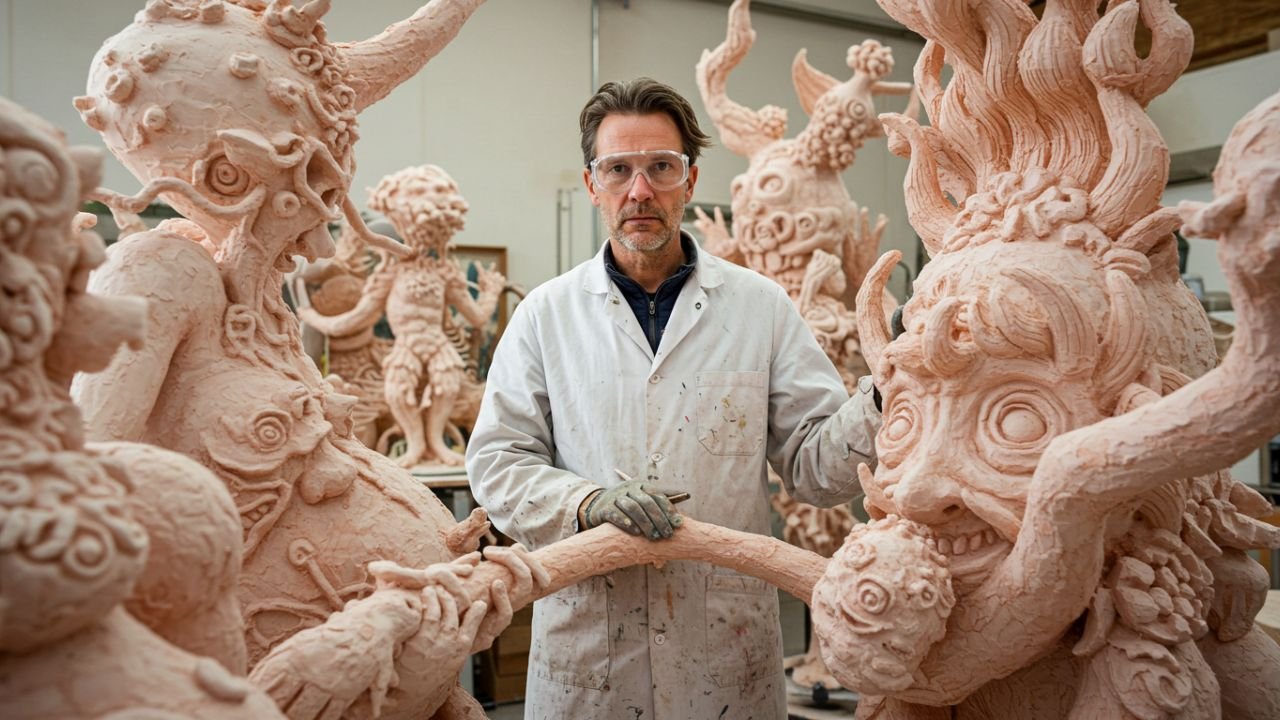Introduction to Jeroen Dik and his work
Jeroen Dik stands as a notable figure in the realms of art history and conservation, captivating audiences with his groundbreaking ideas. With a unique blend of academic rigor and creative insight, he has transformed how we perceive and preserve cultural artifacts. His work not only sheds light on the intricate narratives woven into material culture but also prompts critical discussions about their significance in our lives today. As we explore Jeroen Dik’s influential contributions, we uncover a journey that challenges conventional thinking and invites us to look deeper into the stories behind what we often take for granted. Get ready to delve into a world where art meets preservation, revealing layers of meaning that resonate across time and space.
The origin and evolution of Dik’s ideas
Jeroen Dik’s journey began with a fascination for art and its contexts. His early work was steeped in traditional methodologies, focusing on established narratives within art history.
As he delved deeper into the subject, his perspectives shifted. He started to explore the intersections of culture, society, and materiality. This broadened lens allowed him to connect the dots between historical artifacts and contemporary issues.
Dik’s ideas evolved further through interdisciplinary approaches. He incorporated insights from anthropology and sociology. This fusion created a richer understanding of artistic expressions across time.
His transition toward conservation also marked a significant turning point. Dik recognized that preserving cultural heritage requires acknowledging its dynamic nature rather than viewing it as static relics of the past.
Through this evolution, Jeroen Dik has become an influential voice advocating for innovative ways to interpret art history while emphasizing the importance of context in understanding material culture.
Dik’s contributions to the fields of art history and conservation
Jeroen Dik has made significant strides in both art history and conservation. His innovative methodologies have shifted how experts approach the study of artworks and artifacts. By blending traditional techniques with cutting-edge technology, he provides deeper insight into historical contexts.
Dik’s work emphasizes understanding materials at a molecular level. This focus allows conservators to develop better preservation strategies tailored to individual pieces. His research helps reveal hidden layers within paintings, shedding light on artists’ intentions and methods.
Moreover, his interdisciplinary approach encourages collaboration among historians, scientists, and conservators. This synergy fosters a more comprehensive understanding of cultural heritage. Through lectures and publications, Dik disseminates knowledge that inspires future generations in these fields.
His passion for teaching shapes budding professionals who carry forward his legacy of inquiry-driven practices in art history and conservation.
His impact on the study of cultural heritage and material culture
Jeroen Dik’s impact on cultural heritage and material culture is profound. His work challenges traditional narratives, urging scholars to consider how objects shape societal values.
He emphasizes the importance of context in understanding artifacts. By analyzing their histories, he reveals connections between people and their creations. This approach enriches our appreciation for diverse cultures.
Dik also advocates for interdisciplinary collaboration. He brings together art historians, archaeologists, and conservationists to foster a holistic view of heritage. This teamwork leads to innovative solutions for preserving cultural assets.
His theories encourage a reevaluation of what we consider valuable in history. Rather than viewing artifacts solely as relics, he encourages seeing them as living testimonies of human experience.
Through his insights, Dik sparks conversations about identity and memory within communities. His contributions continue to inspire future generations dedicated to conserving our shared cultural legacy.
Controversies surrounding Dik’s theories and methods
Jeroen Dik’s theories have sparked considerable debate within academic circles. Critics often question his methodological approach, arguing that it lacks empirical support. They contend that some of his interpretations lean heavily on subjective analysis rather than solid evidence.
Notably, the application of his concepts in conservation practices has also raised eyebrows. Some professionals feel that adopting Dik’s ideas could lead to oversimplification in understanding complex artworks and artifacts.
Additionally, there are concerns about how these theories influence public perception of cultural heritage. Detractors argue they may inadvertently promote a narrow view of history and artistic value.
These controversies serve as a backdrop for ongoing discussions about modern art history methodologies. As the field evolves, Jeroen Dik remains at the center of an important dialogue regarding best practices in both theory and application.
Future implications for Dik’s work in the field
Jeroen Dik’s innovative approach to art history and conservation is paving the way for future research. His techniques encourage scholars to rethink traditional methods of analysis, emphasizing the importance of interdisciplinary collaboration.
As technology advances, Dik’s emphasis on integrating digital tools will likely become even more essential. Virtual reality and augmented reality applications could transform how we experience cultural heritage.
Moreover, his focus on material culture invites a broader understanding of artifacts beyond their aesthetic value. This perspective encourages new narratives that highlight social contexts and histories tied to objects.
Future generations may also explore ethical dimensions raised by Dik’s work. Questions about preservation vs. accessibility will challenge professionals in the field as they navigate modern dilemmas surrounding cultural heritage.
Dik’s influence is sure to resonate as emerging scholars build upon his foundational ideas while addressing contemporary issues in art history and conservation practices.
Conclusion: Why Jeroen Dik is a leading figure in art history and conservation
Jeroen Dik has carved a distinct niche in the realm of art history and conservation. His innovative ideas challenge traditional perceptions, urging scholars to rethink established norms. Through his research, he highlights the importance of understanding cultural heritage not just as static relics but as dynamic entities that evolve over time.
His contributions extend beyond academia; they influence how institutions approach preservation and interpretation. By advocating for a more holistic view of material culture, Dik emphasizes the interconnectedness of art and society.
Despite facing controversy surrounding some of his theories, Dik’s work ignites important discussions within the field. His ability to provoke debate is perhaps one of his greatest strengths, pushing others to explore new dimensions in their studies.
Looking ahead, Jeroen Dik’s impact will likely continue to resonate throughout art history and conservation practices globally. His pioneering spirit serves as an inspiration for future generations aiming to better understand our shared cultural narratives. The legacy he creates today may very well shape tomorrow’s discourse on what it means to preserve our artistic heritage effectively.

